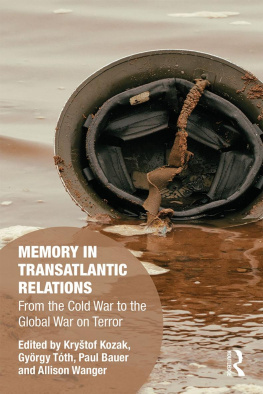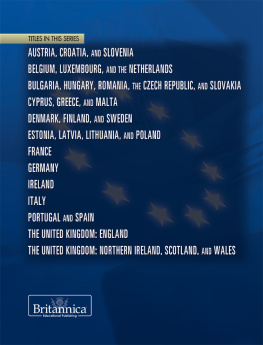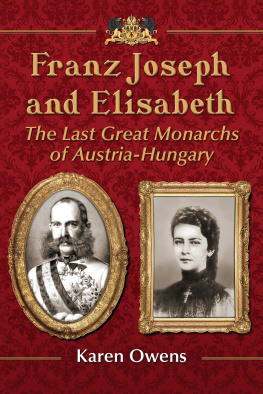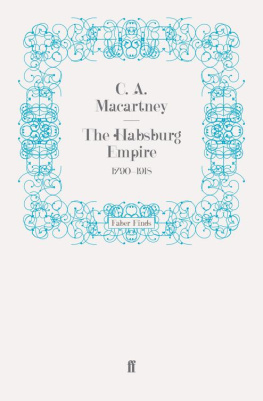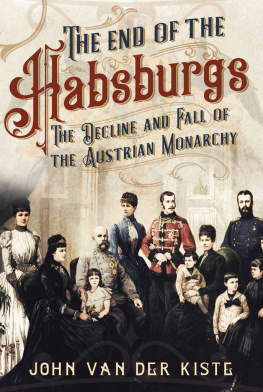Transatlantic Relations and the Great War
Transatlantic Relations and the Great War explores the relations between the Danube Monarchy of Austria-Hungary and the modern U.S. democracy and how that relationship developed over decades until it ended in a final rupture.
As the World War I drew to a close in late 1918, the Mid-European Union was created to fill the vacuum in Central and Eastern Europe as the old Danube Monarchy of Austria-Hungary was falling apart. One year before, in December 1917, the United States had declared war on Austria-Hungary and, overnight, huge masses of immigrants from the Habsburg Empire became enemy aliens in the United States. Offering a major deviation from traditional historiography, this book explains how the countdown of mostly diplomatic events in that fatal year 1918 could have taken an alternative course. In addition to providing a narrative account of Austrian-Hungarian relations with the United States in the years leading up to the World War I, the author also demonstrates how an almost total ignorance of the affairs of the Dual Monarchy was to be found in the United States and vice versa.
This book is a fascinating and important resource for students and scholars interested in modern European and U.S. history, diplomatic relations, and war studies.
Transatlantic Relations and the Great War is Kurt Bednars first book in English. Born 1950, he married into a Minnesota family, graduated twice from the University of Vienna, in law (1974) and in his late passion history (2012). In 2017, Bednar published, in German, Paper War between Washington and Vienna 19171918.
Routledge Studies in Modern History
Children Born of War
Past, Present and Future
Edited by Barbara Stelzl-Marx, Sabine Lee and Heide Glaesmer
The Cold War, the Space Race, and the Law of Outer Space
Space for Peace
Albert K. Lai
Experiences of War in Europe and the Americas, 17921815
Soldiers, Slaves, and Civilians
Mark Lawrence
Colonising New Zealand
A Reappraisal
Paul Moon
Dictatorship in the Nineteenth Century
Conceptualisations, Experiences, Transfers
Edited by Moiss Prieto
Denial
The Final Stage of Genocide?
Edited by John Cox, Amal Khoury and Sarah Minslow
Koreans in Transnational Diasporas of the Russian Far East and Manchuria, 18951920
Arirang People
Hye Ok Park
For more information about this series, please visit: https://www.routledge.com/history/series/MODHIST
First published 2022
by Routledge
2 Park Square, Milton Park, Abingdon, Oxon OX14 4RN
and by Routledge
605 Third Avenue, New York, NY 10158
Routledge is an imprint of the Taylor & Francis Group, an informa business
2022 Kurt Bednar
The right of Kurt Bednar to be identified as author of this work has been asserted by him in accordance with sections 77 and 78 of the Copyright, Designs and Patents Act 1988.
All rights reserved. No part of this book may be reprinted or reproduced or utilised in any form or by any electronic, mechanical, or other means, now known or hereafter invented, including photocopying and recording, or in any information storage or retrieval system, without permission in writing from the publishers.
Trademark notice: Product or corporate names may be trademarks or registered trademarks, and are used only for identification and explanation without intent to infringe.
British Library Cataloguing-in-Publication Data
A catalogue record for this book is available from the British Library
Library of Congress Cataloging-in-Publication Data
A catalog record has been requested for this book
ISBN: 978-1-032-06408-6 (hbk)
ISBN: 978-1-032-06413-0 (pbk)
ISBN: 978-1-003-20220-2 (ebk)
DOI: 10.4324/9781003202202
Typeset in Times New Roman
by codeMantra
DOI: 10.4324/9781003202202-1
The Habsburg Empire and the American Republic concluded their first diplomatic cooperation in 1838. It was mainly the latter which pursued her case in order to facilitate access of American entrepreneurs to the large territory in the middle of Europe. But the year 1838 was not the first time the two powers tried to arrive at some sort of relationship. In fact, the period from the French Revolution via Napoleon to the Congress of Vienna rather interrupted a process which had commenced under Emperor Joseph II. In 1812, America herself fell victim to the spirit of these pugnacious years in her war with England. The American Republic would have disliked almost all the Congress concluded. Most certainly, she would not have welcomed, let alone participated in (had she been invited to), the Holy Alliance, an informal pact of Catholic emperors in Europe. Thus, when its influence petered out, it was time for another attempt for a transatlantic connection of the antipodes in Washington and Vienna.
Early period (up to 1838 and beyond)
Jonathan Singerton1 investigated the earliest period of informal relations. His conclusion (A Story of Benign Neglect, quoting Rudolf Agstner2) covers relations between Philadelphia/Washington and Vienna probably in the best way (not only for the period of his study but also until 19173). Over the years, relations passed phases best described as wavelike, with the crest seeing the erosion of Habsburg neutrality, in combination with the development of postwar commerce, even the first Habsburg representative in the United States; the trough was marked by the trifling personage of Thomas Jefferson and, in due course, Habsburg disillusionment caused by and, at the same time, causing general imbecility, confusion, and misery.4
The author described what compelled an absolutist monarchy and democratic republic towards a diplomatic relationship which rested upon the primacy of commercial advantage one proven by the revolutionary procurement of arms from the Austrian Netherlands and the prospective ventures of mercantile groups in Trieste.5 On the one hand, petitions from businessmen like Christoph Beller in Trieste (August 1776) started a flood of mercantile calls for action in order to benefit from the newly open North American ports.6 On the other hand, merchants lacked autonomy in the high-diplomatic level7 where personalities in the political field called the shots and showed the way to take. As Singerton pointed out, with the American representation in Europe switching from Benjamin Franklin to Thomas Jefferson, a significant deterioration of perceptions occurred. This concurred with a little war8 provoked by the Holy Roman Emperor himself. Joseph II sought to enforce the final dismantling of the Barrier system which had closed the river Scheldt off from Austrian commerce. The diplomatic fallout caused by the Emperors decision to sail on two separate occasions two warships into Dutch waters preventing a full-blown war between the small republic and the larger imperial power changed Jeffersons image of Joseph into one of a despot and warmonger.9
Official documents, along with comments by Hans Schlitter of the University of Vienna, uncovered and supplemented by the Belgian Hubert van Houtte in 1911,10 of course, spoke a different language. Thus, it took a quarter century for Americans to respond to Viennese publications containing interesting information particularly upon the subject of concluding a treaty of commerce11 between Emperor Joseph II and the American Republic.12 Relying upon Schlitters work,13 van Houtte revealed the true course of negotiations, added by material stored in Brussels which was in competition with Trieste to organize the Empires U.S. trade.14 Altogether, the sources (used by the author) dealt with an impressive variety of issues like emigration of Europeans to America,15 bankruptcies there, fashions of American women, sale of European gin in America, use of carpets there, consumption of European linens, as well as the issue of paper money in America.


